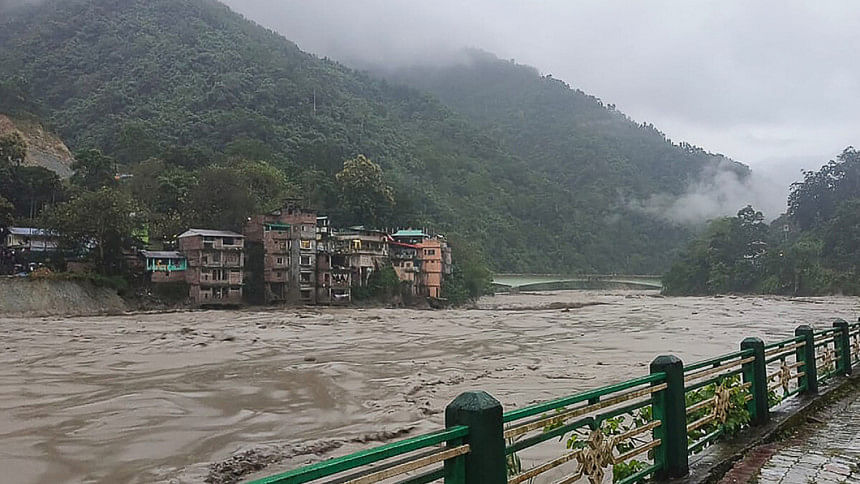Sikkim tragedy: Study warned about lake outburst 8 years ago

A study done by India's Central Water Commission eight years ago warned the Sikkim government that most of the hydropower projects on the Teesta river are highly vulnerable to events like the disastrous glacial lake outburst that occurred in the northeastern state four days ago.
On October 4, a glacial lake outburst took place at the Lhonak Lake, located at an altitude of 17,100 feet above sea level near India's borders with China and Nepal, resulting in a sharp rise in water levels of Teesta river already swollen by monsoon rains, damaging a dam and sweeping away houses in Mangan, Gangtok, Pakyong, and Namchi districts.
Satellite images from the Hyderabad-based National Remote Sensing Centre showed that the area of south Lhonak Lake drastically reduced from 167.4 hectares on September 28 to 60.3 hectares on October 4, confirming that the outburst caused massive damage in the Teesta river basin.
The incident also resulted in the breach of the Chungthang dam, a crucial component of the 1,200-megawatt (MW) Teesta Stage III Hydro Electric Project, the largest hydropower project in the state.
The commission's study in 2015, titled "Glacial Lake Outburst Flood–South Lhonak System in Teesta River Basin", noted that outbursts in glacial lakes in the Teesta River Basin could lead to severe flash floods downstream, impacting the entirety of hydropower projects Teesta I to VI along a 175-km stretch of the river.
While the worst-case scenario involves multiple glacial lake outbursts simultaneously, they said the likelihood of such an event remains very low.
The study had predicted a potential 4.45-metre increase in the Teesta river's water level due to a glacial lake outburst at South Lhonak Lake.
It is estimated that the lake could discharge water at a rate of 6,210 cubic metres per second, which could reach Chungthang and the Teesta III projects within two hours.
According to the study, hydropower project authorities need to consider the findings of the commission and develop mechanisms for close monitoring of the lakes, enabling timely warnings regarding abnormal water level changes and geological health.
A commission official, on condition of anonymity, said, "Multiple studies, including one by the commission, had cautioned the state authorities about the glacial lake outburst hazard in the upper Teesta river region."
Indian government agencies and research studies have on several occasions in the last two decades warned about potential glacial lake outbursts in Sikkim.
Glacial lake outbursts occur when lakes formed by melting glaciers suddenly burst open due to various reasons, including excessive water accumulation in the lake or triggers like earthquakes.
According to the South Asia Network of Dams, Rivers, and People, south Lhonak Lake is a glacial-moraine-dammed lake situated in Sikkim's far northwestern region. Considered one of the fastest-expanding lakes in the Sikkim Himalaya region and is classified as one of the 14 potentially dangerous lakes susceptible to glacial lake outburst floods.
Lhonak Lake's size is rapidly increasing due to the melting of the lake's associated South Lhonak glacier and additional water from the adjacent north Lhonak and main Lhonak glaciers.

 For all latest news, follow The Daily Star's Google News channel.
For all latest news, follow The Daily Star's Google News channel. 



Comments